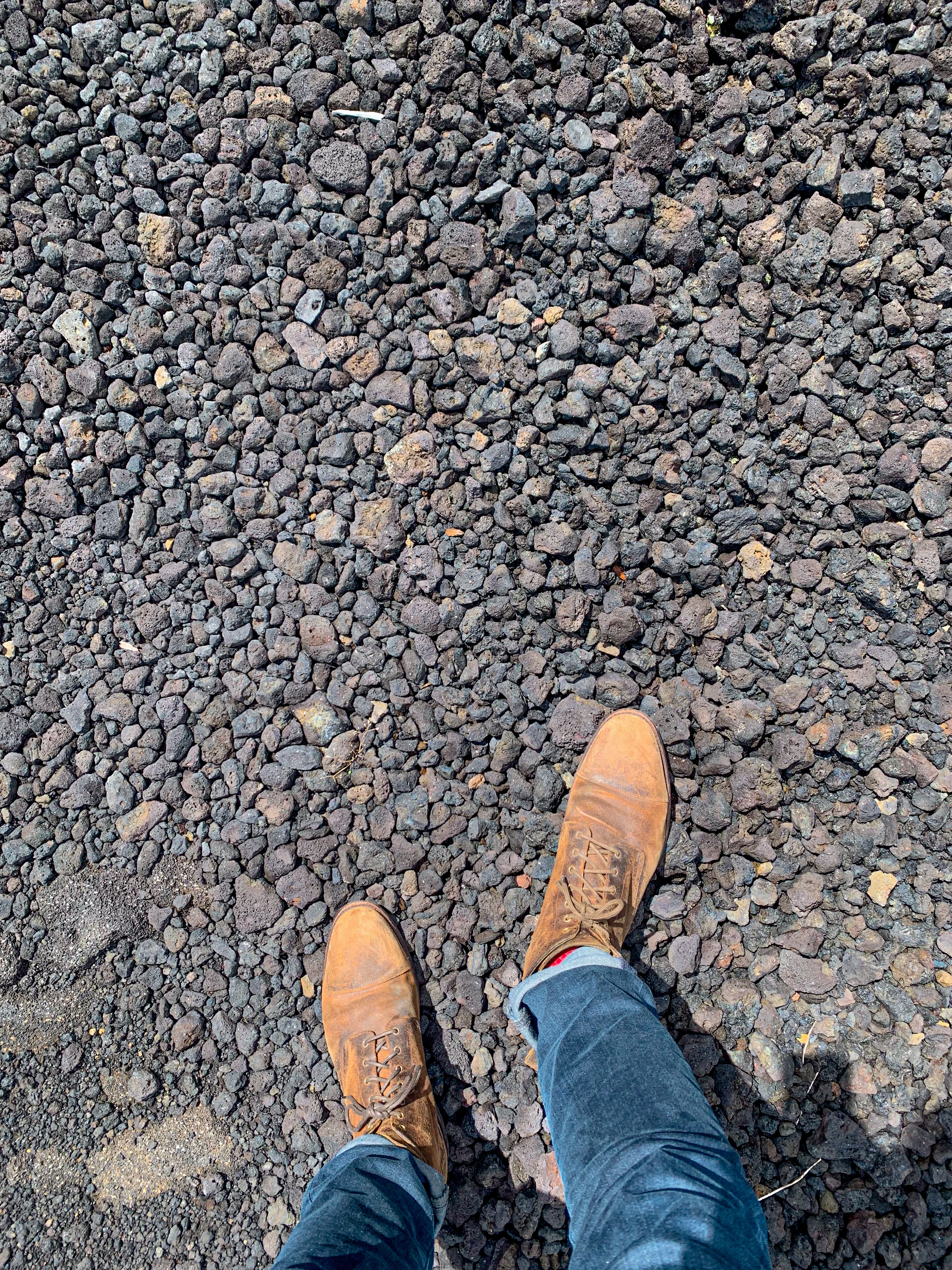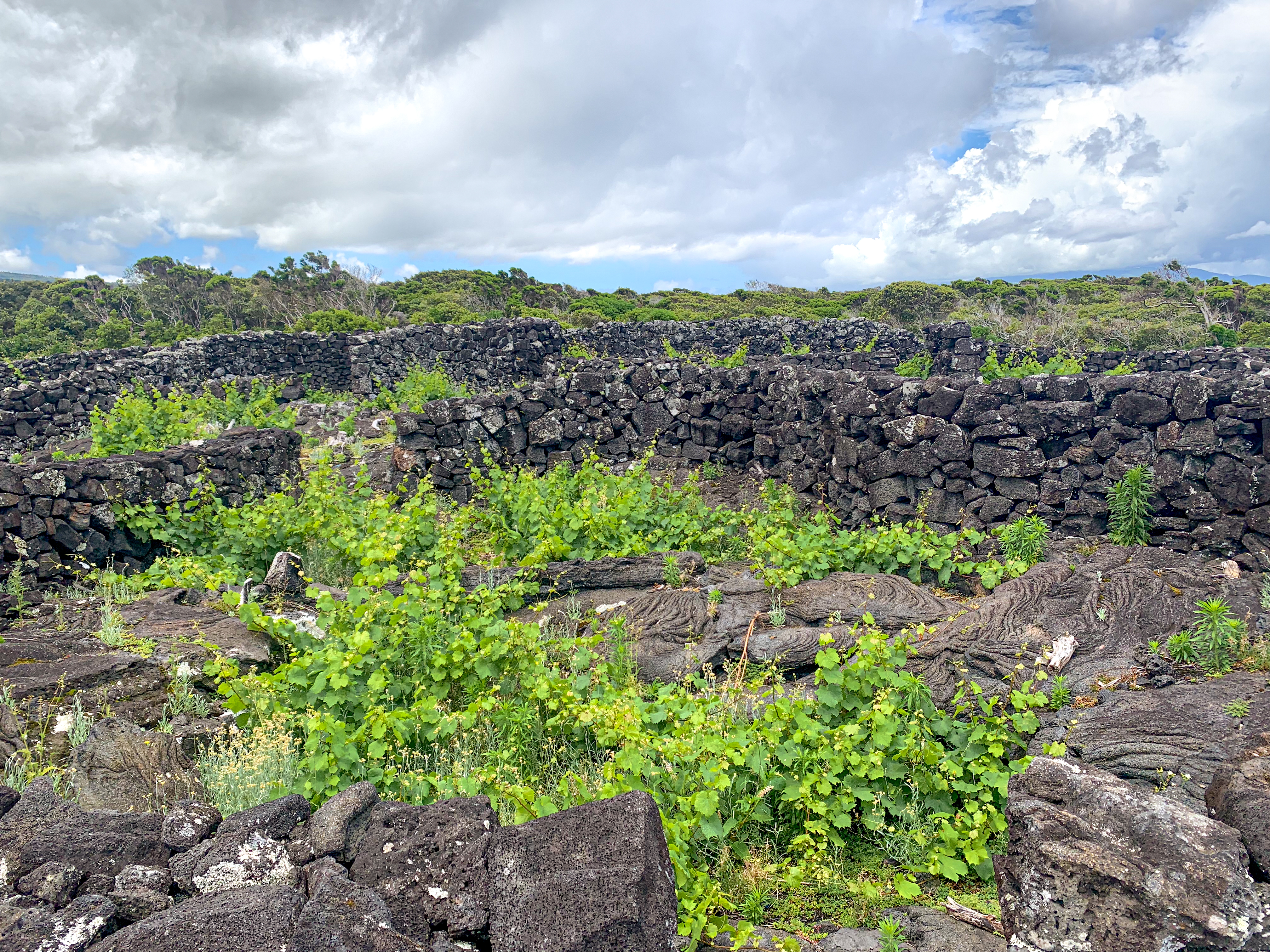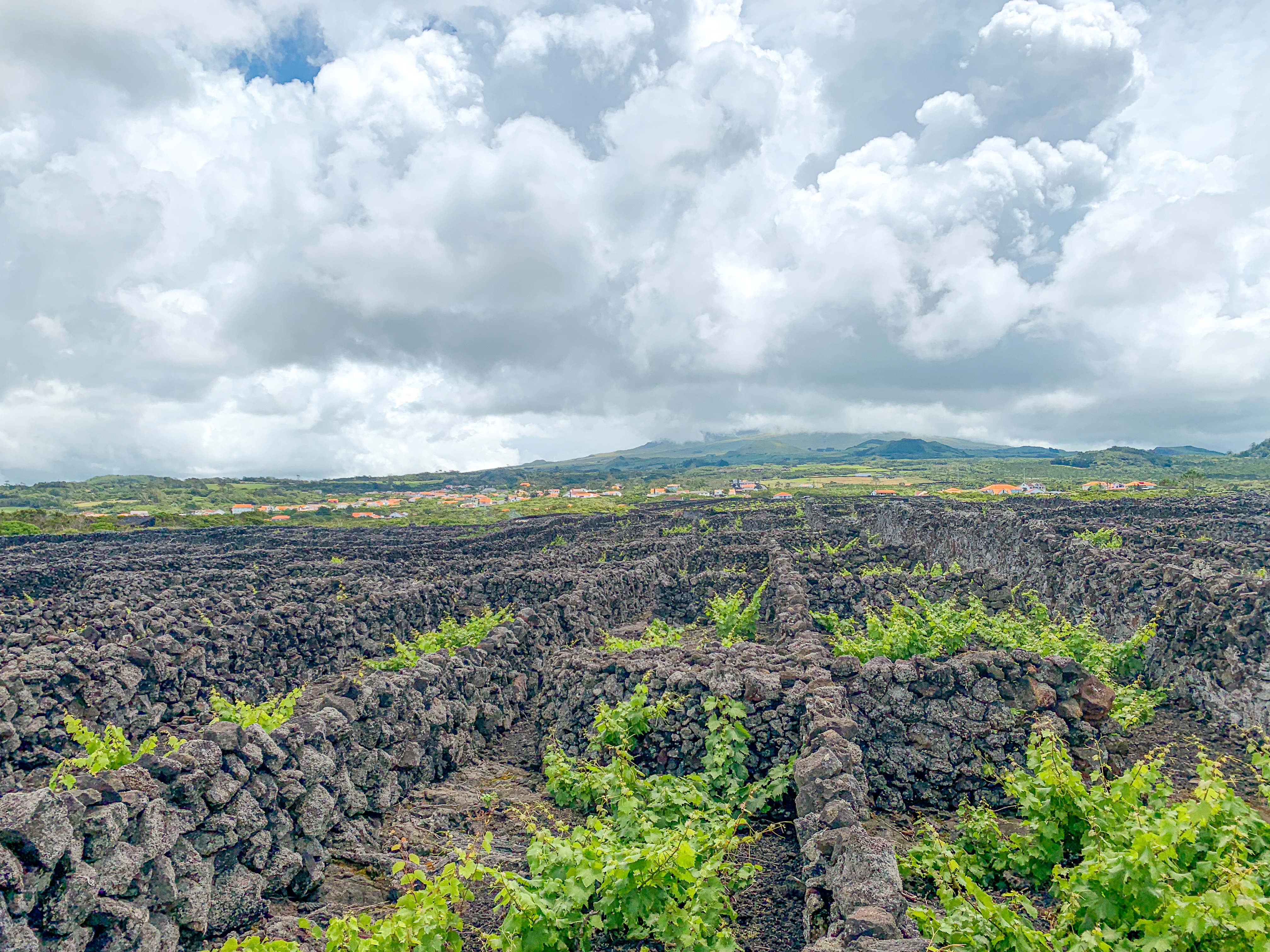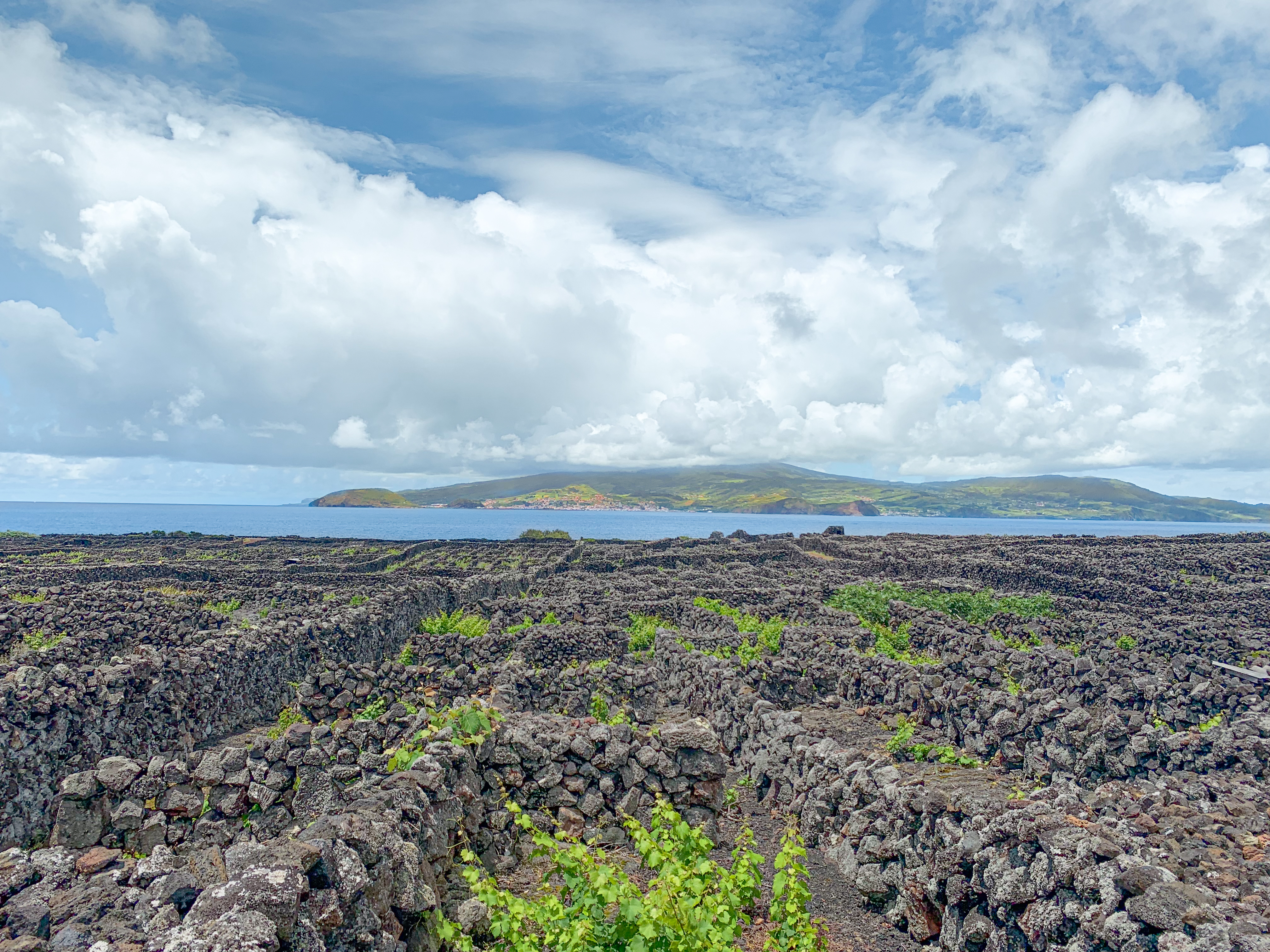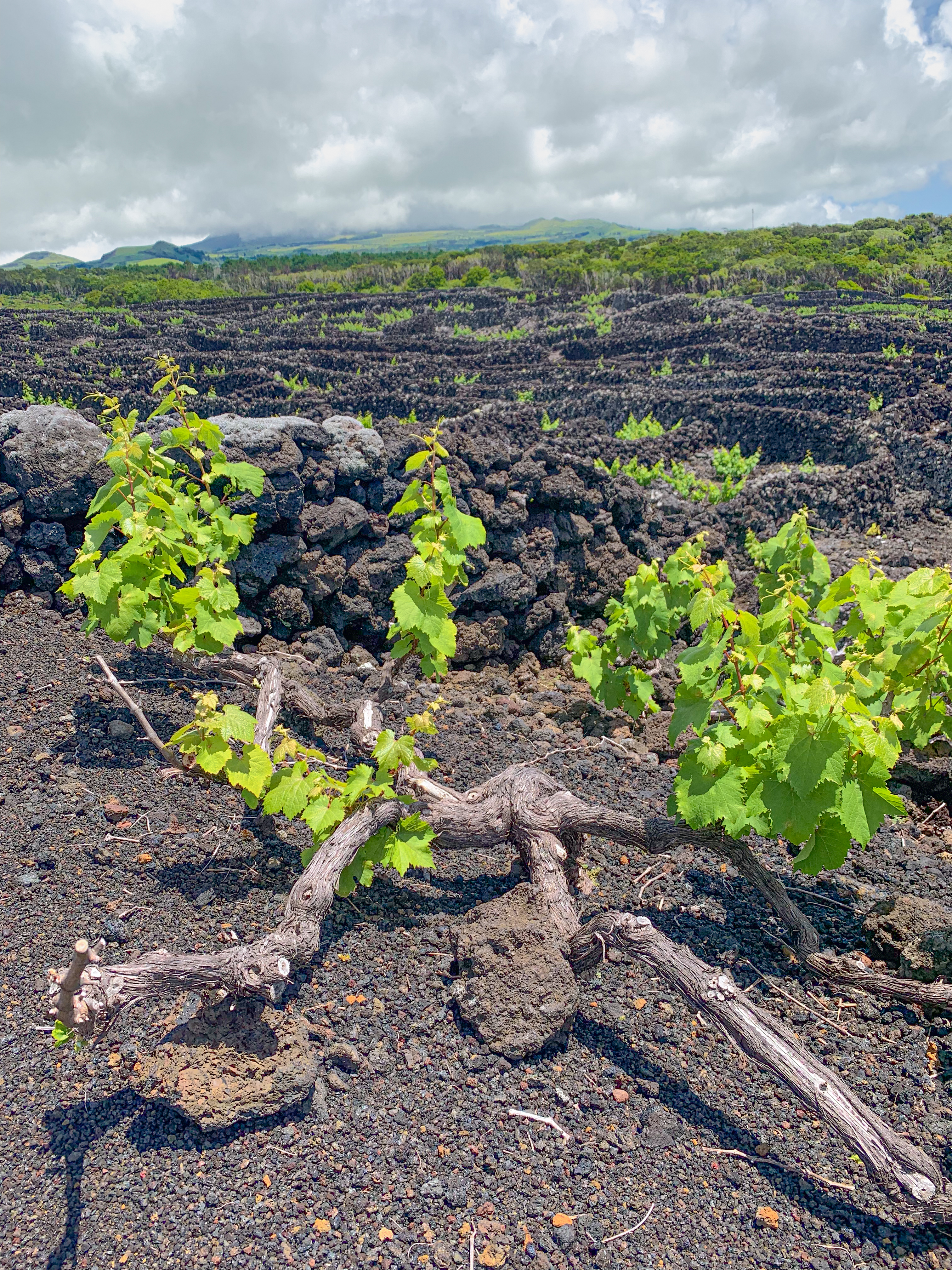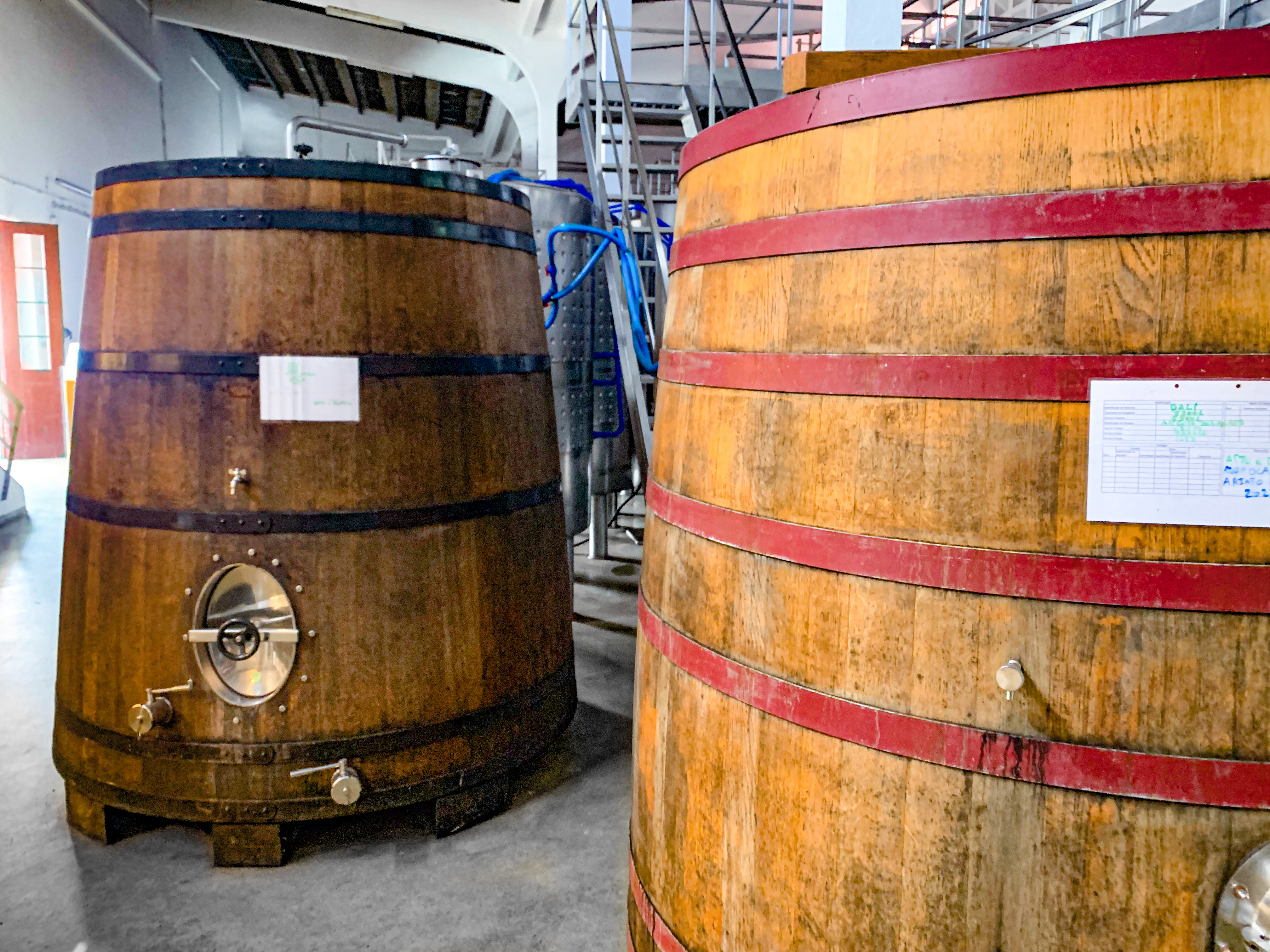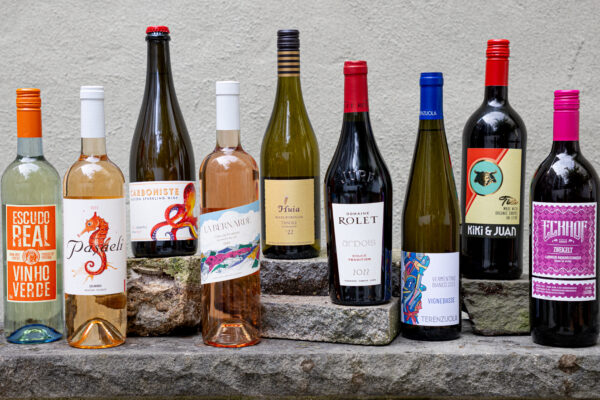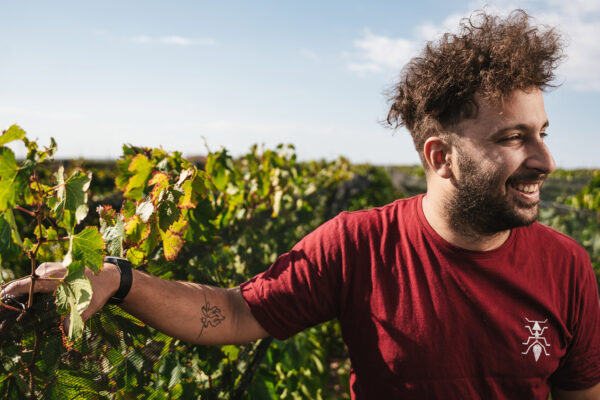In the second of our three-part series visiting Azores and Canary Islands wineries, we explore the unlikely and utterly unique Ilha do Pico co-op a thousand miles from mainland Portugal.
Pro tip: if you find yourself on the wine trail on Pico Island—the production center of Portugal’s Azores, a volcanic archipelago in the middle of the North Atlantic—leave your flip-flops at the hotel…
These basaltic rocks are recent—and they are effing sharp! Only three hundred years have passed since Mount Pico (the towering 2,350-meter volcano, Portugal’s highest point, which forms the spine of the island) last erupted and covered this area with its latest round of biscoitos (“biscuits,” the rocks seen above) and lajidos (“slabs,” the mesmerizing wavelike forms seen below that capture so vividly the image of flowing lava). You don’t want to trip and fall here!
It seems almost incredible that these remote islands were discovered as early as they were (probably in the 1300s, though recent evidence suggests Scandinavian presence long before) and that the grapevine followed so close behind. But follow the Europeans it did, as surely as summer follows spring.
The early settlers found a rocky landscape no less forbidding than the one seen today, and it was only through painstaking manual rock-breaking—literally—that they created enough topsoil to sow crops, erecting in the process vast honeycombs of dry-stone 4×4 walls called currais (“corrals”) to protect their crops from whipping wind and burning salt spray. It’s no wonder that the nearly 300 hectares of the criacão velha (the “old growth”), the oldest planted zone on the island, are a UNESCO World Heritage Site. This is some of the most extreme and spectacular viticulture to be encountered anywhere on the planet.
That’s a view towards the volcano amidst the criacão velha. It’s a running joke among the locals that you’ll almost never see it, as it is usually shrouded in clouds and mist. Turn around 180 degrees, and you feel as if you could reach out and touch the Atlantic looking out towards Faial Island:
This is Pico’s, and the co-op’s, heartland, but they also have growers in Santa Luzia, on the north side of the island, and Candelaria, a wildly remote area in the south. All these vines are trained in a form akin to what we would call ‘bushvines’, except that they’re kept much lower to the ground to protect against the harsh elements—so low, in fact, that many of the individual arms have to be hand-propped by lava rocks placed under them as supports.
If you’re curious about where these grapes go, almost half of them, cultivated by nearly 300 micro-scale farmer families, are destined for the Adega Cooperativa da Ilha do Pico. Founded in 1949, this amazing co-op winery is the heart and soul, the bloodstream and lungs, of the island.
Since 2017, they’ve been on a particular tear—that’s when Bernardo Cabral, their ace enologist, first arrived to ensure that the fabulous raw material being delivered to the co-op made it to bottle in its most compelling form.
That material consists primarily of very old-vine Arinto dos Açores (different from mainland Portuguese Arinto, it’s a relative of Verdelho) and Verdelho itself—most well-known from its star turn in Madeira, but nowadays thought to have originated in the Azores and only later found its way to Madeira! Other varieties cultivated include Terrantez do Pico (probably not identical to the Madeirense Terrantez) and Isabella in red, a vinifera-labrusca hybrid.
The wines therefrom are irreplaceably unique: salty, rocky, branded by their extreme origin but with no shortage of livewire lime-blossom and citrus fruit. One thinks at first in comparisons: Santorini minus 2% alcohol? Madeira, if it weren’t fortified and oxidized and had zero residual sugar? In the end, they are what they are: inimitably themselves.
The most important white cuvée, Terras de Lava, is an unoaked Arinto/Verdelho blend that never sees malolactic. It’s punchy, bright, oceanic, and a ridiculous value—the most affordable wine from the Azores in the U.S. market by a wide margin, in fact.
Ripping varietal cuvées of both those grapes are produced as well, in much smaller quantities, with oak influence ranging from a touch of barrel (Verdelho) to the near-invisible embrace of a pair of venerable Portuguese-coopered French-oak foudres (Arinto):
And while Ilha do Pico’s focus is squarely on these dry, unfortified styles which are the new face of the island, they nonetheless proudly stand as the very-nearly-exclusive source in the Unites States of the old-school style: sweet, fortified Verdelho-based wines softened by long aging in American oak. These are marvelous and sui generis: Madeira-adjacent, but less aggressively oxidative.
THE WINES
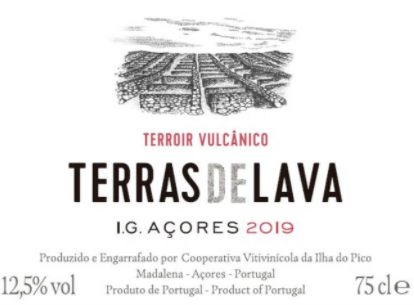
Açores Branco ‘Terras de Lava’ 2022
- 70% Arinto dos Açores; 30% combined Fernão Pires, Verdejo, Moscatel
- Fermented in steel
- Aged 4 months on the lees
A beautiful introduction to the wines of Ilha do Pico. Crisp and briny, with bright citrus fruit and savory herbs.
Wine Advocate: 91 “It’s quite aromatic, with floral notes from the Arinto, dried peach and a touch of honey and beeswax… The palate is round and velvety but with a salty twist that is the signature of the island. It’s delicious and full of personality. 2022 was a very salty year, due to the wind and the seawater in the vines.”
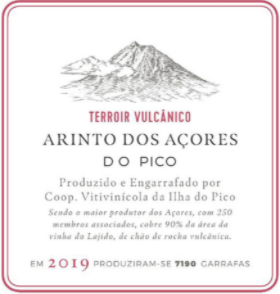
- 100% Arinto
- Fermented in barrel
- Aged 6 months on the lees
The most planted grape on the island, this varietal wine is bursting with stone fruit and has a softer, round palate.
Wine Advocate: 92 “… serious and nuanced. It is elegant and has the tasty saltiness of 2022… it has volume and a tender texture but retains tension and freshness… It is a wine that is easy to like, with fruit and saltiness.”
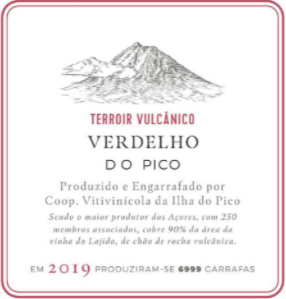
- 100% Verdelho
- Fermented in a combination of steel and barrel
- Aged 6 months on the lees
Juicy stone fruits and zesty citrus, salty and nutty, with a lees influenced richness.
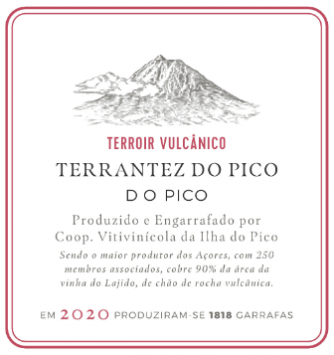
- 100% Terrantez
- Femented in a single very old barrel
- Aged 6 months on the lees
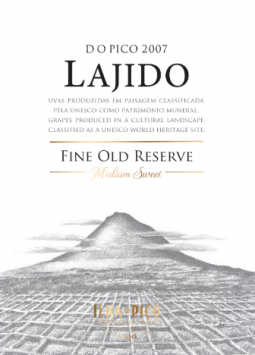
Pico Fine Old Reserve ‘Lajido’ 2007
- 100% Verdelho
- Painstaking manual viticulture on pure basalt
- Gentle pressing followed by fermentation in temperature-controlled stainless
- Primary alcoholic suspended at about 85 g/L residual sugar with the addition of neutral grape spirit
- Aged in used French oak casks for 12 years before bottling
- 18% ABV
- Lajido is the local name for volcanic rock





